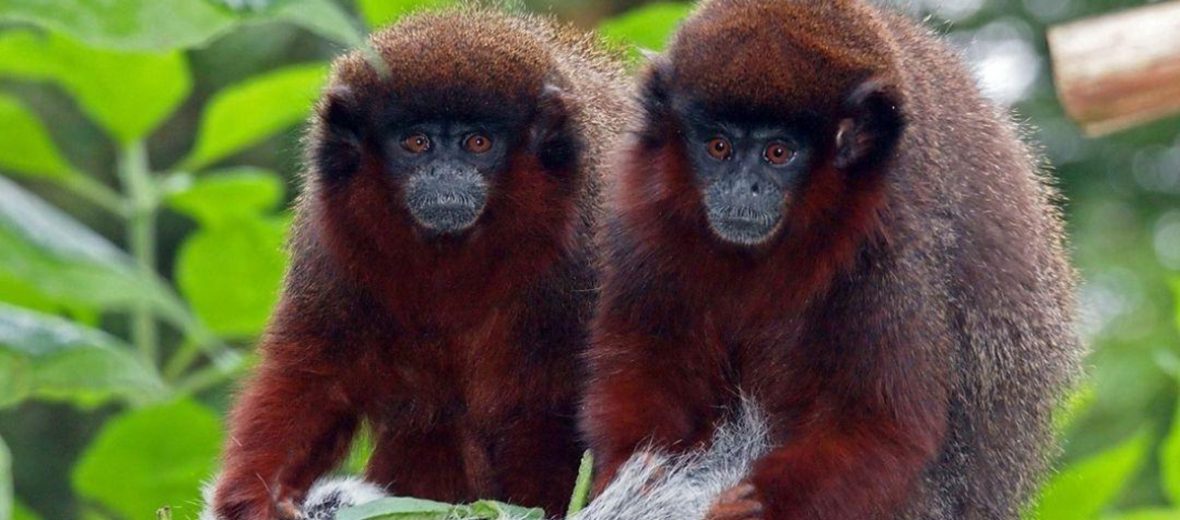
The coppery titi is 1 of 20 species of titi. They are a New World (from the Americas) primate that hails from Peru, Brazil, and possibly Colombia. These primates prefer a rainforest habitat. Due to the fact that they only face the potential threats of habitat destruction and loss at the hands of the logging industry, residential, and commercial developments; hunting (for bush meat); and trapping (for the exotic pet trade), these adorable monkeys are listed as Least Concern by the IUCN. Their population trend is unknown.
First the Stats…
Scientific name: Plecturocebus cupreus
Weight: Up to 2.2 lbs.
Length: Up to 14 inches, plus up to a 15+ inch tail
Lifespan: Up to 20+ years
Now on to the Facts!
1.) These primates were first described as Callicebus cupreus, in 1823. They would later be renamed as Plecturocebus cupreus.
2.) They are diurnal (active during the day).
3.) Coppery titis are strictly arboreal (spend their lives in trees).
4.) The coppery titi dwells in family groups that contain an adult pair along with up to 3 generations of offspring.
5.) These monkeys are monogamous (mate for life).
But wait, there’s more on the coppery titi!
6.) Their tails are long but not prehensile (used as an additional limb).
7.) Upon first meeting one another, they will smell each other’s faces. They will also rub a scent produced from their sternal gland on a nearby branch or trunk and smell that as well.
Did you know…?
An adorable practice these primates engage in is tail-intertwining. This is where they will sit next to each other on a branch and entwine their tails as a display of attachment to each other.
8.) Visual communication involves looking away from others, shaking their head and body, swaying, raising and whipping their tail, baring their teeth, lowering their head, closing their eyes, lip protrusion, & arching their back.
9.) 75% of their diet consists of fruit. The remaining 25% contains bamboo and other leaves, and insects.
10.) Another social habit is that they will often eat together.
But wait, there’s still more on the coppery titi!
11.) Their vocalizations can be heard up to .62 mile away. They also come in varying frequencies and pitches, to the point that if you listen carefully, you can identify each individual based on their call.
12.) Birds of prey and feral cats prey on these primates.
Did you know…?
Predators are met with an alarm call that can last upwards of 40 minutes, followed by a “mobbing behavior” where all the members of a troop (sans the infants) gather together to thwart the attacker.
13.) While lactating, females will consume almost double the amount of insects as normal.
14.) Females undergo up to a 129 day gestation (pregnancy) that yields a single infant.
15.) Infants are weaned in up to 4 months.
Now a Short Coppery Titi Video!
Be sure to share & comment below! Also, check out the Critter Science YouTube channel. Videos added regularly!
Want to suggest a critter for me to write about? Let me know here.
Some source material acquired from: Wikipedia & IUCN.
Photo credit: New England Primate Conservancy



